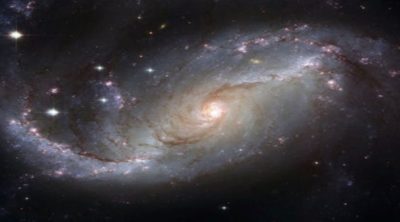The science world is abuzz with talk of Betelgeuse possibly going supernova in the near future. There are even rumors our sky will light up after this spectacular cosmic event, creating a second sun of sorts for all Earthlings to see. Let’s separate fact from fiction to reveal whether a Betelgeuse supernova event has the potential to create a second sun.
Can an Exploding Betelgeuse Illuminate the Sky as a Second Sun?
In short, the answer to this question is a resounding “No.” The science community is well aware of the fact that Betelgeuse is losing mass and will eventually supernova. However, even if this slowly-dying red supergiant goes supernova in your lifetime, you probably won’t see it illuminate the sky to the extent of our sun. However, if you search the web for “Betelgeuse” and “second sun”, you will find plenty of people claiming this massive star will create such a massive explosion upon supernova that it shines brighter than our sun or even incinerates our planet. Fret not, these claims are merely shock-statements meant to generate clicks.
So, What Will Really Happen When Betelgeuse Bites the Dust?
There is no clear answer to this question. However, there is a growing consensus in the scientific community that a Betelgeuse-gone-supernova will shine bright in the night sky, albeit for a brief period of time. Though Betelgeuse has upwards of 20 times the mass of our sun, it probably won’t be nearly as bright. Most scientists and space experts agree an exploding Betelgeuse will likely be visible in daylight hours and also at night. The star’s explosion could even cast some shadows.
People will point upwards to the newly-added sky light in wonder. Some will claim this illumination is the second coming of Jesus. Others will think Earth is being invaded by UFOs. However, the truth is Betelgeuse’s destruction will likely generate light for a short period of time only to fizzle out, leaving a noticeable absence in the configuration of Orion’s Belt.
Does an Exploding Betelgeuse Have the Potential to Damage Earth’s Ozone Layer?
This is a much more interesting question as the scientific community is unsure as to whether the radiation emanating form Betelgeuse’s implosion could reach Earth. When massive stars such as Betelgeuse go supernova, they emit extensive amounts of radiation as well as matter out into space. Thankfully, Betelgeuse is 600 light-years away from the pale blue dot we call Earth. This means Betelgeuse is just far enough away from Earth for us to avoid significant damage after the giant goes supernova.
Furthermore, most scientists insist Betelgeuse’s supernova will result in a type II core collapse. In plain English, this means Betelgeuse’s implosion probably won’t generate harmful gamma-ray bursts. The moral of the Betelgeuse story is those conspiracy theorists posting seemingly endless half-truths and lies to the internet are sensationalizing this looming cosmic event to make a quick buck. Betelgeuse’s inevitable death might put on an entertaining light show yet the resulting illumination will not rival that of our sun.


